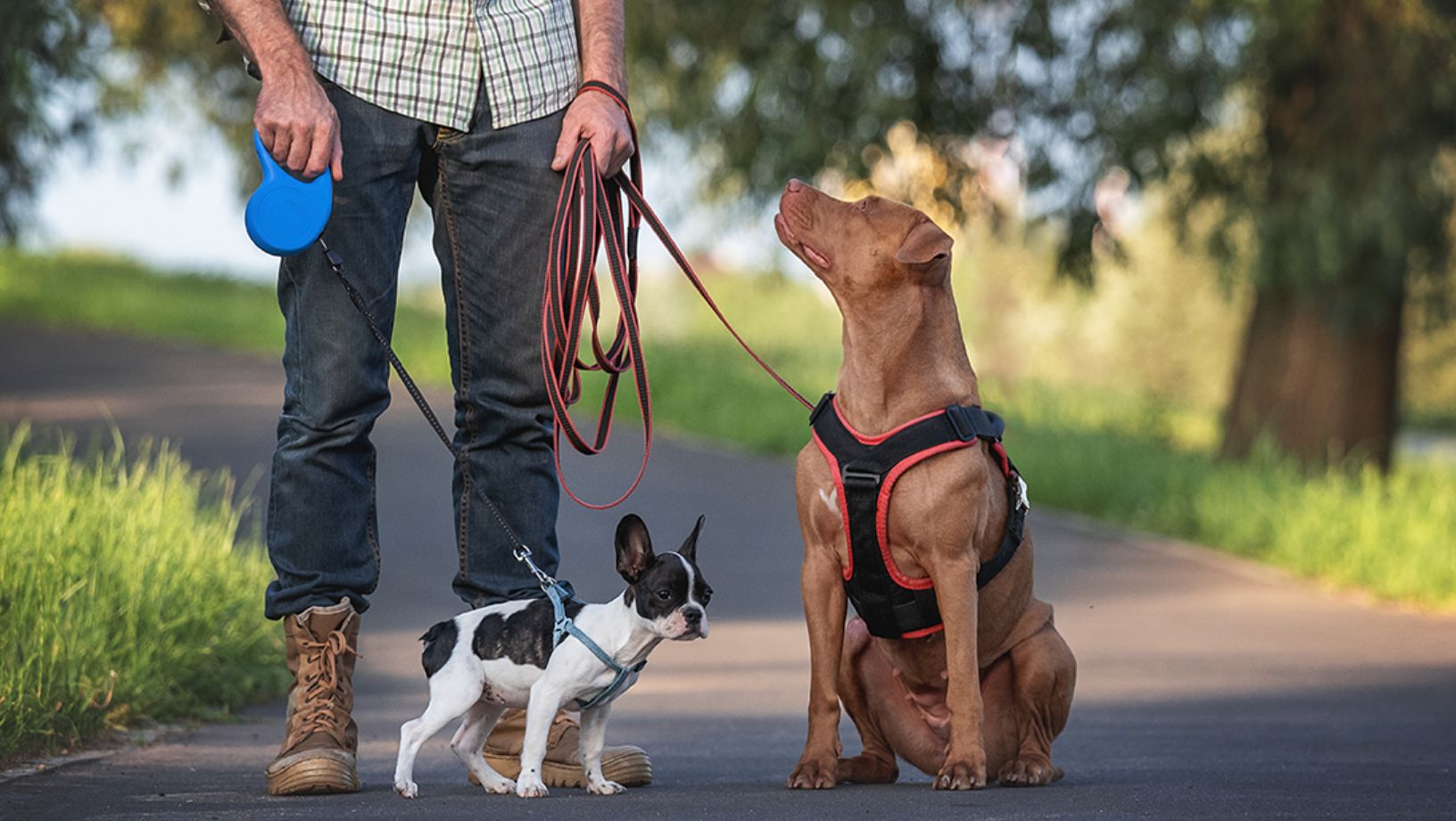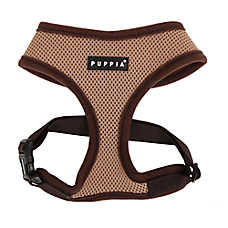How to Choose a Dog Harness

In this Article
When to choose a harness
If your dog has neck problems, if you have a puppy, or if your dog is a smaller breed a collar can pull too forcefully during their walks. A harness fastens around your pet’s body and has a leash loop near the shoulders, which takes pressure off your dog’s neck.
There are tons of harness styles — the best choice will depend on your dog’s size and personality.
Standard harness
The most common type of harness distributes the force of the leash against a dog’s chest and back, which works well for small dogs. However, it’s not the best option for a large, rambunctious pooch because it allows them to pull hard against the leash.
No-pull harness
This harness will tighten slightly when a dog pulls — but the force is felt under the dog’s front “armpits” instead their neck. Pay special attention to fit and watch for any signs of rubbing or irritation, since this style can sometimes pinch a pooch in the pits.
The right size and fit
Different styles have different fits. Measure around your dog’s ribcage before you buy any harness and check the packaging to make sure you’re choosing the proper size. It’s important to get size right. Harnesses that are too tight can be painful, but dogs can wiggle out of a too-loose harness.
Don’t ditch the packaging before you’ve tried the harness a few times. Putting on a harness can be tricky and the directions will come in handy so you don’t accidently slip it on backwards or upside-down.
When should I not use a harness?
Because harnesses are less restrictive and more comfortable than collars, dogs in harnesses are more likely to pull at their leashes. If your pet constantly seems to be trying to pull your arm off during walks, you might want to stick with a collar-and- leash.
Frequently Asked Questions (FAQs)
What type of harness is best for a puppy?
The best way to know whether or not a dog harness is good for your pup is to talk to your veterinarian. They will instruct you on the best type and fit for your breed. Once you have decided on a type of harness for your pup, it may take a few days for your pup to adjust to a new dog harness, so watch carefully to ensure that they are comfortable.
How should a dog harness fit?
Before choosing the right dog harness, measure around your pup’s rib cage. And choose a size based on those measurements. The right fit is important because if the harness is too tight, this may be uncomfortable for them. If it's too big, they could slip out during walks.
What type of harness is best for a dog?
It may take a few tries to fit and adjust the harness to see if it’s the right size, so read the directions carefully before trying it on your dog and adjust it accordingly. The most common types of dog harnesses include standard fit, no-pull harnesses, soft vest harnesses, and trail dog harnesses.
Why you shouldn't use a harness?
The best way to know whether or not a dog harness is good for your pup is to talk to your veterinarian.
Do you leave a dog harness on all the time?
It is not recommended to leave a harness on for extended periods of time, as this can cause irritation to your dog's skin and can also add to the risk of entanglement. The best use of a harness is for when the dog is doing an activity with the pet parent.






